In spite of repeated demands for unconditional apology, the British Government is still sticking to its guns on Jallianwala Bagh Massacre of 1919.
Ravi Kumar
British Prime Minister Theresa May on April 10, 2019 described the Jallianwala Bagh massacre in Amritsar in 1919 as a “shameful scar” on British Indian history but stopped short of a formal apology sought by a cross-section of parliamentariaus in previous debates. “The tragedy of Jallianwala Bagh of 1919 is a shameful scar on British Indian history. As Her Majesty the Queen (Elizabeth II) said before visiting Jallianwala Bagh in 1997, it is a distressing example of our past history with India,” she said in her statement. In response, Opposition Labour Party Leader Jeremy Corbyn demanded that those who lost their lives in the massacre deserve a “full, clear and unequivocal apology for what took place”. Indian-origin Labour MPs Preet Kaur Gill and Virendra Sharma wanted United Kingdom Prime Minister to publicly apologise.
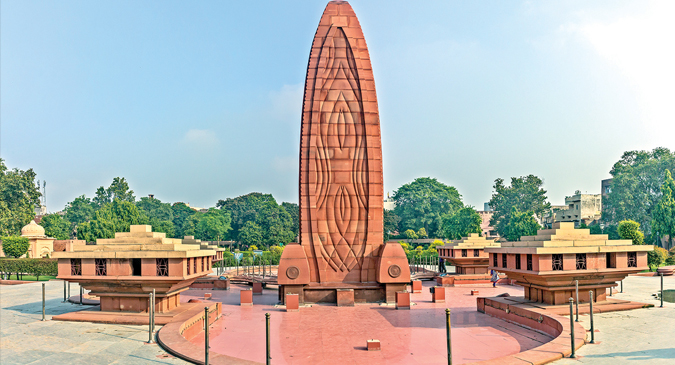
A wider view of Jallianwala Bagh Memorial
The Jallianwala Bagh massacre, in which some 1600 peaceful and unarmed Punjabis were massacred, took place on April13, 1919 when troops of the British Indian Army under the command of Colonel Reginald Dyer fired rifles into a crowd of Punjabis, who had gathered in Jallianwala Bagh, Amritsar, Punjab. The civilians had assembled for the New Year Festival known as Baisakhi. Baisakhi marks the Sikh new year and commemorates the formation of Khalsa panth of warriors under Guru Gobind Singh in 1699. It is additionally a spring harvest festival for the Punjabis. It is also stated that it marks peaceful protest to condemn the arrest and deportation of national leader, Satya Pal.
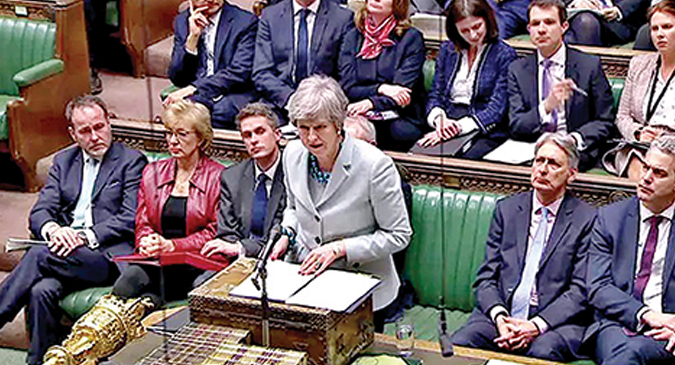
British Prime Minister Theresa May in British Parliament
The Jallianwalla Bagh is a public garden of 6 to 7 acres (2.8 ha), walled on all sides, with five entrances. Dyer, without warning the crowd to disperse, blocked the main exits. Dyer ordered his troops to begin shooting toward the densest sections of the crowd. Cease-fire was ordered only when ammunition supplies were almost exhausted, after approximately 1,650 rounds were spent. The wounded could not be moved from where they had fallen, as a curfew was declared, and many more died during the night.
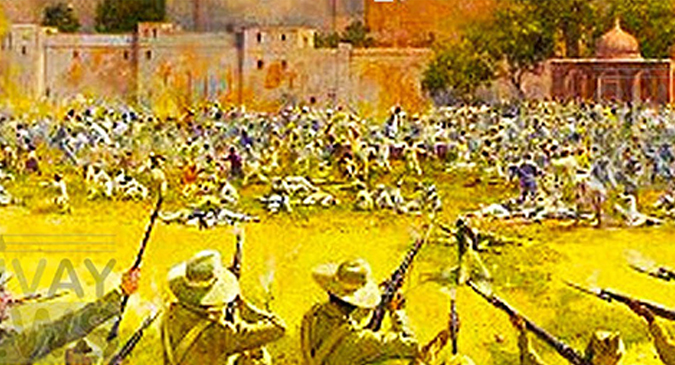
A painting of British soldiers shooting civilians in Amritsar on April 13, 1919
This incident shocked Rabindranath Tagore to such extent that he stated whilst refusing his knighthood, that “such mass murderers aren’t worthy of giving any title to anyone”.
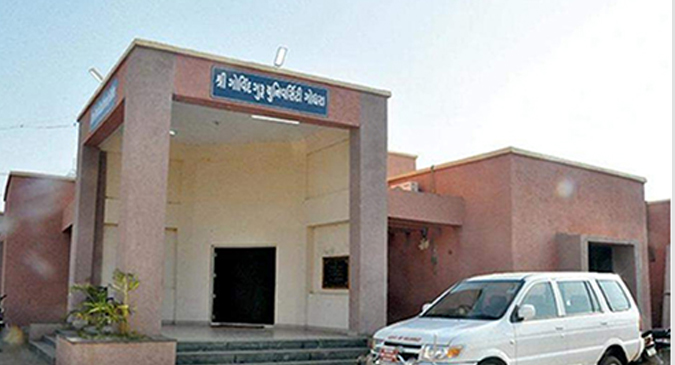
Sri Govind Guru University at Godhra
Rabindranath Tagore was the first Asian to receive Nobel Prize in Literature in 1913 for his work Gitanjali: Song Offerings. He was also awarded a knighthood by King George V in the 1915, but Tagore renounced it after the 1919 Jallianwala Bagh massacre in Amritsar in which more than 1500 were killed.
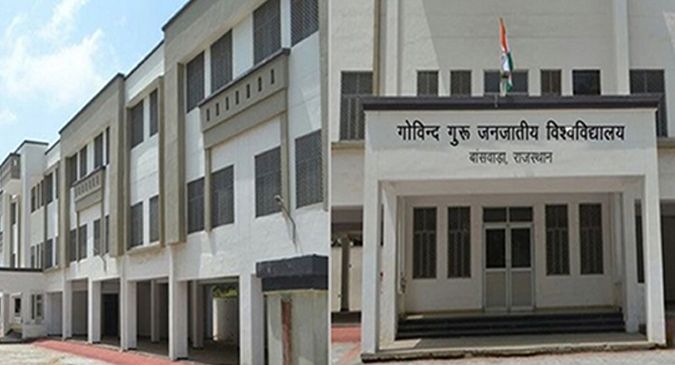
Govind Guru Janajatiya Vishwavidhyalay at Banswara, Rajasthan
Renouncing the knighthood, Tagore wrote in a letter addressed to Lord Chelmsford, the then British Viceroy of India, “The disproportionate severity of the punishments inflicted upon the unfortunate people and the methods of carrying them out, we are convinced, are without parallel in the history of civilised governments… and I for my part wish to stand, shorn of all special distinctions, by the side of my country men.”
Rajasthan & Gujarat have had their own Jallianwala Baghs too. On November 17, 1913, six years before Jalianwala Bagh massacre, the British gunned down more than 1,500 Bhils (about 4,000 according to some sources) on Mangadh Hill, on the border between Rajasthan and GujaratOn March 13, 1940, at Caxton Hall in London, Udham Singh, an Indian independence activist who had witnessed the events in Amritsar and had himself been wounded, shot and killed Michael O’Dwyer, the Lieutenant-Governor of Punjab at the time of the massacre, who had approved Dyer’s action and was believed to have been the main planner.

Govind Giri, reverently called Govind Guru
Udham Singh had told the court at his trial: He was the real culprit. He wanted to crush the spirit of my people, so I have crushed him. For full 21 years, I have been trying to wreak vengeance. I am happy that I have done the job. I am not scared of death. I am dying for my country. I have seen my people starving in India under the British rule. I have protested against this, it was my duty. What a greater honour could be bestowed on me than death for the sake of my motherland?
“I salute Shaheed-i-Azam Udham Singh with reverence who had kissed the noose so that we may be free”, said Prime Minister Jawaharlal Nehru in 1952.
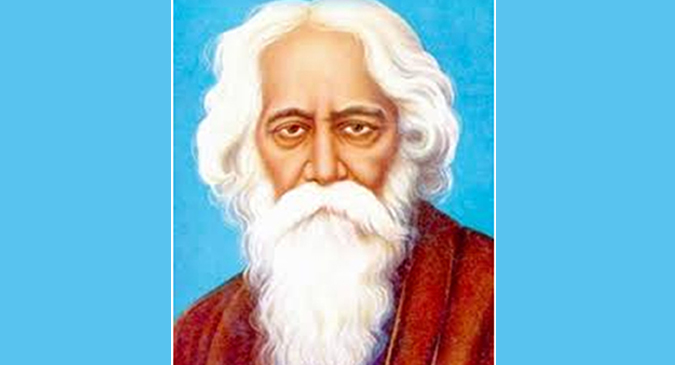
Rabindranath Tagore
Sardar Bhagat Singh was at the tender age of 12 years when the horrendous massacre took place. He visited the site hours after the carnage took place, collected the blood soaked soil, kept it in his puja room and worshipped the blood-stained soil every day.
Queen Elizabeth II spoke about Jallianwala Massacre at a state banquet on October 13, 1997 in India: “It is no secret that there have been some difficult episodes in our past – Jallianwala Bagh, which I shall visit tomorrow, is a distressing example. But history cannot be rewritten, however much we might sometimes wish otherwise. It has its moments of sadness as well as gladness. We must learn from the sadness and build on the gladness”.
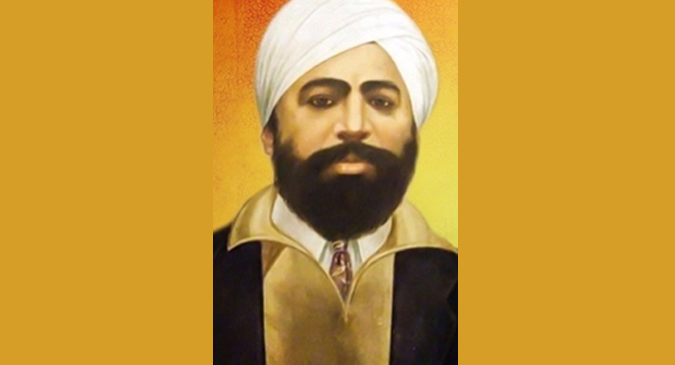
Udham Singh
On October 14, 1997 the Queen visited Jallianwala Bagh to pay her respects observing a 30-second silence. During her visit, she wore a dress of pink apricot or saffron, which has religious significance to the Sikhs. She removed her shoes while visiting the monument before laying wreath at the monument.
Rajasthan & Gujarat have had their own Jallianwala Baghs too. On November 17, 1913, six years before Jallianwala Bagh massacre, the British gunned down more than 1,500 Bhils (about 4,000 according to some sources) on Mangadh Hill, on the border between Rajasthan and Gujarat.
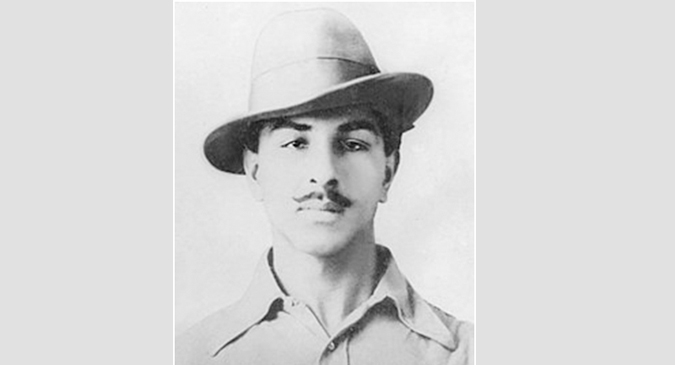
Sardar Bhagat Singh
Govind Giri, reverently called Govind Guru, was born in a Banjara family in Dungarpur, Rajasthan. Govind Guru started Bhagat movement in 1908. He propagated vegetarianism, abstaining from alcohol and gambling among the Bhils. He asked the Bhils to reject bonded labour, demand a fair price for their labour and fight for their rights. Govind Guru and his followers started assembling at Mangarh in October, 1913. They were to attend a religious fair in the month of Karthik, to organise a large ‘havan’ (fire ritual) and to take the oath. More than one and a half-lakh Bhils assembled at Mangarh to attend the religious ceremony.
Colonel Sherton, assisted by Major Bailey and Captain Stiley, surrounded Mangarh from all sides and the peaceful Bhils were asked to disperse. When the Bhils performing the ‘havan’ refused to do so, they were sprayed with machine gun and artillery fire from all sides. Even automatic machine guns mounted on the back of mules were used. On 17th November, 1913, more than 1500 people died in the barbaric attack. Gujarat and Rajasthan Governments have acknowledged the contribution of Guru Govind Giri. Rajasthan established Govind Guru Janajatiya Vishwavidhyalay at Banswara in 2012 and Gujarat established Shri Govind Guru University at Godhra in 2015.
Vidur-ashwatha is known as the “Jallianwala Bagh of the South”. It is a small village located in the Gauribidanur taluk of Chikkaballapur district in the state of Karnataka, India. Situated near the Karnataka–Andhra Pradesh border, it played a major role in the Indian independence movement. On 25 April 1938, as a part of the freedom struggle, a group of villagers had congregated to organise a Satyagraha. Similar to what happened at Jallianwala Bagh, police fired indiscriminately at the group, resulting in the death of around 35 people. A memorial has been erected in this location bearing the names of those who lost their lives in this incident.



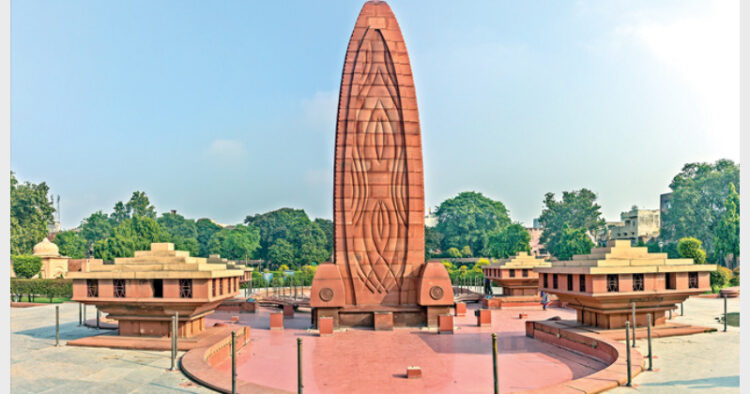









Comments